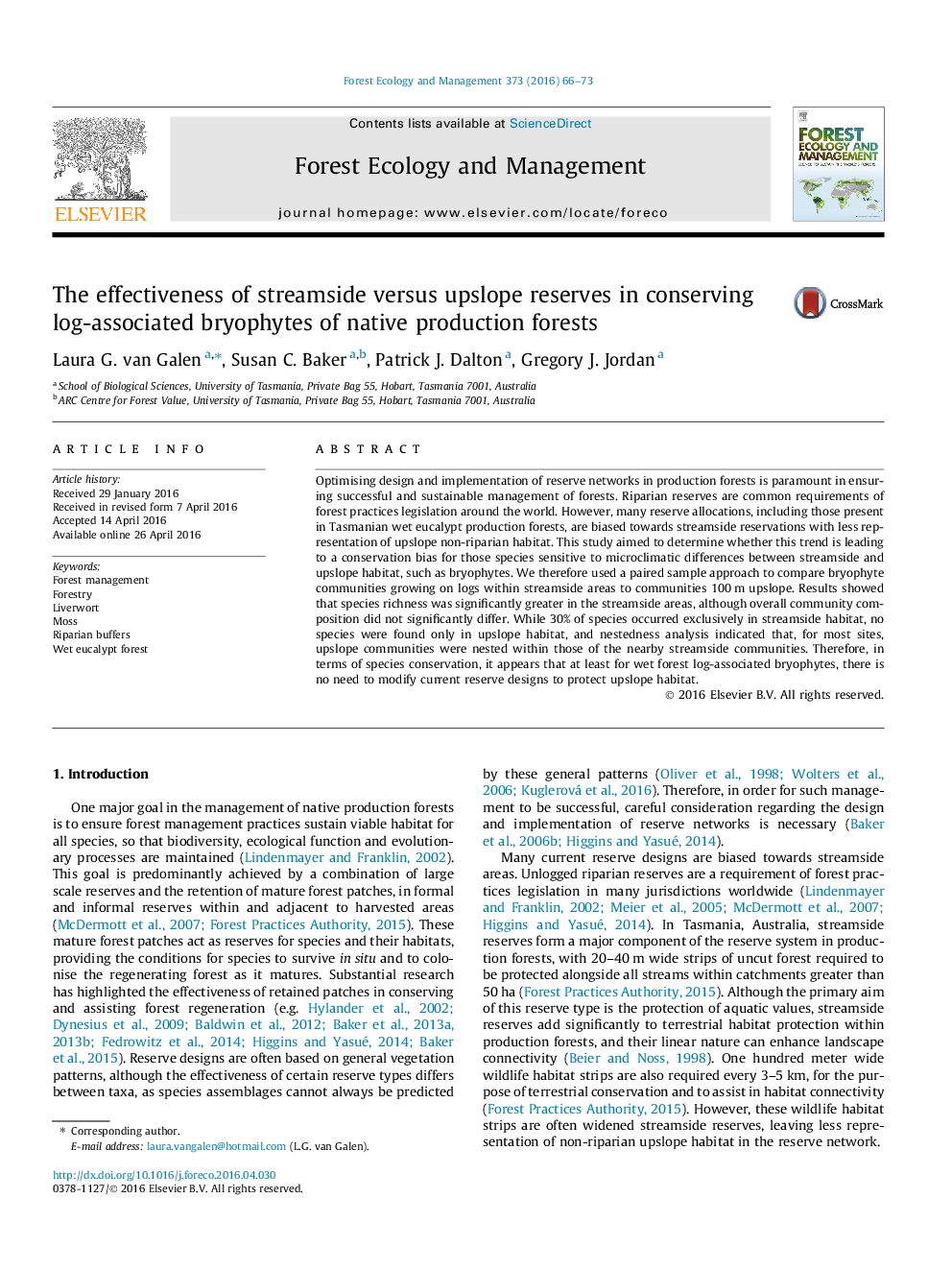| Article ID | Journal | Published Year | Pages | File Type |
|---|---|---|---|---|
| 6542238 | Forest Ecology and Management | 2016 | 8 Pages |
Abstract
Optimising design and implementation of reserve networks in production forests is paramount in ensuring successful and sustainable management of forests. Riparian reserves are common requirements of forest practices legislation around the world. However, many reserve allocations, including those present in Tasmanian wet eucalypt production forests, are biased towards streamside reservations with less representation of upslope non-riparian habitat. This study aimed to determine whether this trend is leading to a conservation bias for those species sensitive to microclimatic differences between streamside and upslope habitat, such as bryophytes. We therefore used a paired sample approach to compare bryophyte communities growing on logs within streamside areas to communities 100Â m upslope. Results showed that species richness was significantly greater in the streamside areas, although overall community composition did not significantly differ. While 30% of species occurred exclusively in streamside habitat, no species were found only in upslope habitat, and nestedness analysis indicated that, for most sites, upslope communities were nested within those of the nearby streamside communities. Therefore, in terms of species conservation, it appears that at least for wet forest log-associated bryophytes, there is no need to modify current reserve designs to protect upslope habitat.
Related Topics
Life Sciences
Agricultural and Biological Sciences
Ecology, Evolution, Behavior and Systematics
Authors
Laura G. van Galen, Susan C. Baker, Patrick J. Dalton, Gregory J. Jordan,
